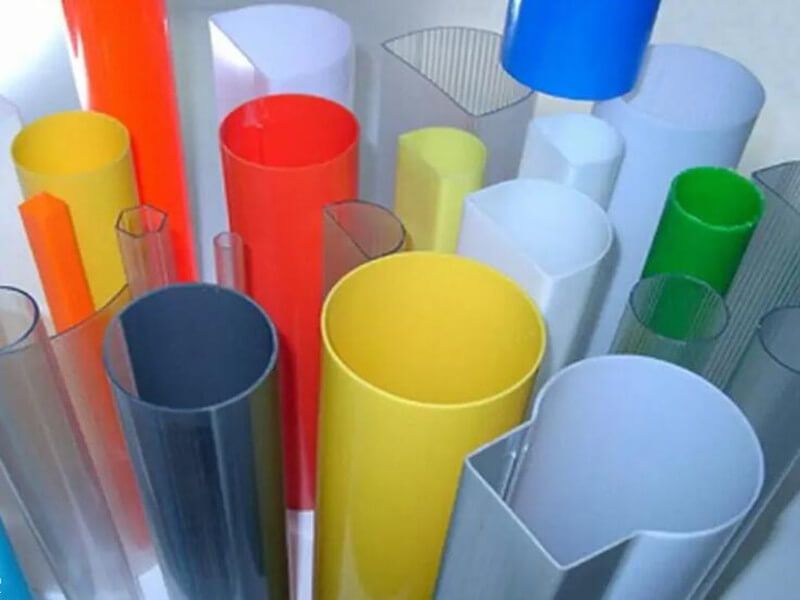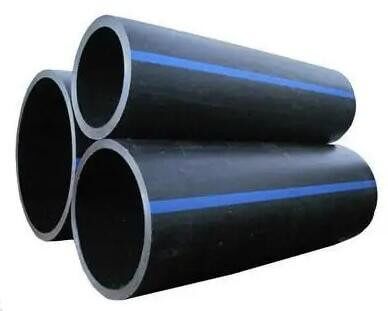Tubing material is the material used for making pipes and pipe fittings. Different pipes need different tubing materials, and the quality of material directly determines the quality of pipes and pipe fittings. According to the material, pipes can be divided into metal pipes and non-metallic pipes.
Nonmetallic Pipe
Non metallic pipes include various common plastic pipes (including PVC pipes for water supply, ABS engineering plastics pipes, PP-R engineering plastic pipes, etc.), composite pipes (aluminum plastic composite pipes, steel plastic composite pipes, etc.), concrete pipes, rubber pipes, glass steel pipes, etc. Today we focus introduce 8 kinds of plastic pipes in non-metallic pipes.
Plastic Pipe
Concept: Plastic pipe is generally made of synthetic resin, that is, polyester as raw material, adding stabilizer, lubricant, plasticizer, etc., by "plastic" method in the pipe making machine through extrusion processing.
Advantages: Light weight, corrosion resistance, beautiful appearance, no bad smell, easy processing, convenient construction, etc.
Disadvantages: Low strength, poor heat resistance.
Purpose: It is mainly used for water supply system piping, drainage, exhaust and sewage sanitary pipe, underground drainage pipe system, rainwater pipe and threading pipe for wire installation.
Classification: According to the different pipe materials: the main building plastic pipes are PVC pipes, chlorinated PVC pipes, polyethylene pipes, cross-linked polyethylene pipes, etc.

1. Unplasticized Polyvinyl Chloride Pipe (PVC-U)
Usage: Used for water supply (non drinking water), drainage pipeline and rainwater pipeline.
Advantages: Corrosion resistance, smooth inner wall, not easy to scale, good hydraulic conditions, light weight, easy to install, not easy to aging, low heat resistance, hard texture, low price, easy to bond, flame retardant.
Disadvantages: No impact resistance, poor durability, high technical requirements of joint bonding, long curing time.
Connection: Socket bonding, plastic welding, special accessories, flange connection, threaded connection.
2. Chlorinated Polyvinyl Chloride pipe (PVC-C)
Application: It is mostly used for hot water pipe, waste liquid pipe and sewage pipe abroad, and for power cable sheath in China.
Advantages: Good temperature resistance, good aging resistance, good flame retardant and flame retardant.
Disadvantages: High price.
Connection: Socket bonding, plastic welding, flange connection of special accessories, threaded connection.
3. PE Pipe
Purpose: HDPE and MDPE pipes are widely used in urban gas pipeline and urban water supply pipeline abroad. At present, domestic HDPE pipe and MDPE pipe are mainly used as urban gas pipeline, a small number of them are used as urban water supply pipeline, LDPE pipe is used as agricultural drainage and irrigation pipeline in large amount.
Classification: According to their density, they are divided into high density polyethylene pipe (HDPE), MDPE pipe and low density polyethylene pipe (LDPE).
Characteristics: HDPE pipe has high strength and rigidity; MDPE pipe has good flexibility and creep resistance besides the compressive strength of HDPE pipe; LDPE pipe has good flexibility, elongation and impact resistance, especially chemical stability and high frequency insulation.
Connection: Electric melting, butt welding, flange, thread thread, etc.

4. Crosslinked Polyethylene Pipe (PE-X)
Purpose: Mainly used for indoor cold and hot water supply and ground radiation heating. There are three kinds of PEX pipes, i.e. a, B and C. PE XA pipe is used for cold and hot water pipeline, oil pipeline, oil tank, chemical pipeline, etc; PE XB pipe is used for heating pipe (toxic fade out of the market); PE XC pipe is the most environmentally friendly pipe for the ground heating.
Advantages: Good temperature resistance, creep resistance, good memory, easy to correct.
Disadvantages: Only metal parts can be used for connection, and can not be recycled and reused.
Connection: Ferrule type, clamp type connection and screw thread connection of special metal connection.
5. Heat Resistant Polyethylene Pipe (PE RT)
Purpose: Indoor cold and hot water pipes, especially hot water system. The ideal choice of radiation heating application.
Advantages: Excellent temperature resistance, used at -70 ℃ ~ 90 ℃; Excellent heat insulation performance, low thermal conductivity; Long service life, can be safely used for more than 50 years; Chemical resistance and corrosion resistance; Good shape memory performance is restored; Vibration resistance and shock resistance; The hydraulic characteristics are excellent.
Disadvantages: Can not be recycled; The overhead span of the pipeline is small and the supporting parts are installed more; Due to the influence of the complicated situation such as cross operation during construction, PE-RT pipe is easy to be broken, and the reserved pipe end is flattened, which causes many rework and rework.
Connection: Hot melt connection, electric melting connection and mechanical connection.
6. Polypropylene Pipe Type 3 (PP-R)
Purpose: Mainly used in the supply of domestic hot and cold water and radiant heating on the ground.
Advantages: Good temperature resistance, recyclable, green and environmental protection products, good sanitary performance suitable for pure water transportation.
Disadvantages: Under the same pressure and medium temperature, the pipe wall is thick and flammable.
Connection: Mainly includes electric melting, hot melt butt joint, and special accessories flange connection, screw connection.
7. Polybutene Tube (PB)
Purpose: Mainly used in tap water, hot water and heating and heating pipe.
Advantages: Good temperature resistance, good tensile, pressure, impact resistance, low creep, high flexibility, under the same pressure and medium temperature conditions, the pipe wall is the thinnest, belongs to green products.
Disadvantages: Dependence on import, high price, flammable.
Connection: Mainly includes electric melting and hot melt butt joint, and rubber ring sealing butt joint can be used.
8. ABS Engineering Plastic Pipe (ABS)
Purpose: It is commonly used as sanitary ware downpipe, gas transmission pipe and high corrosion industrial pipeline abroad. Domestic pipe is generally used for indoor cold and hot water pipe, dosing pipe for water treatment, and industrial pipeline with corrosive effect.
Advantages: High strength, impact resistance, can be directly covered with silk, good sanitary performance is suitable for pure water transportation.
Disadvantages: The bonding curing time is long and flammable.
Connection: Mainly including socket connection, flange connection of special accessories, threaded connection.